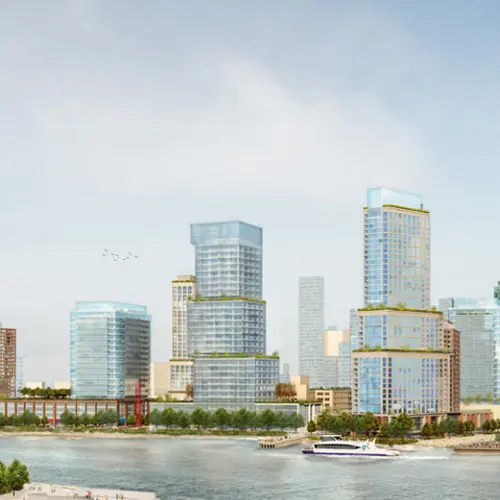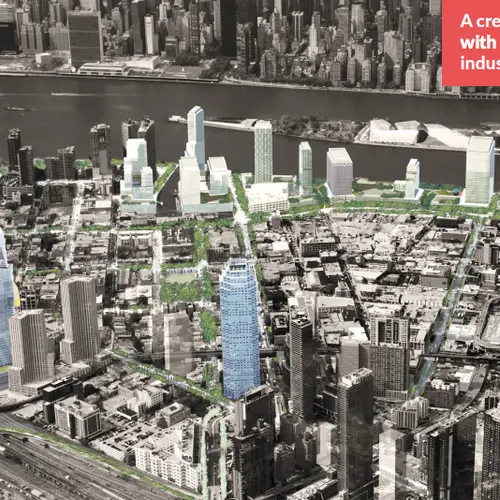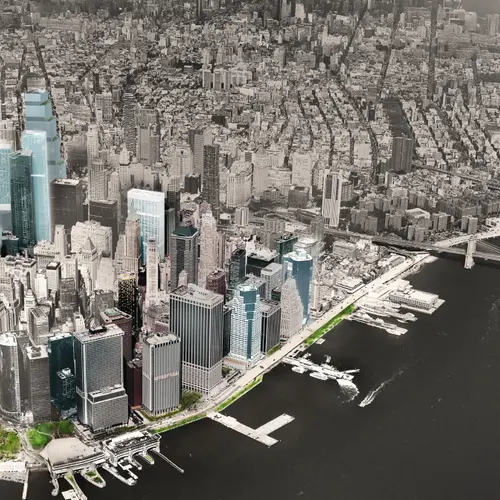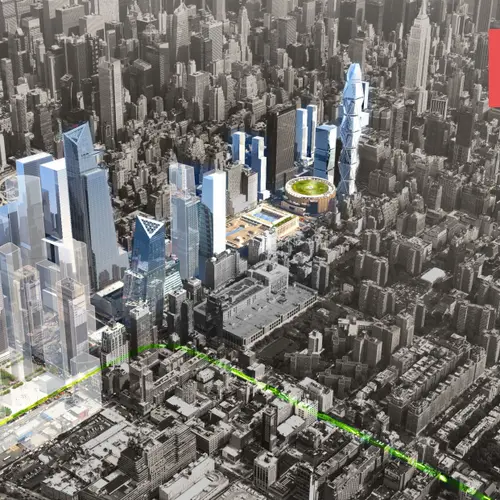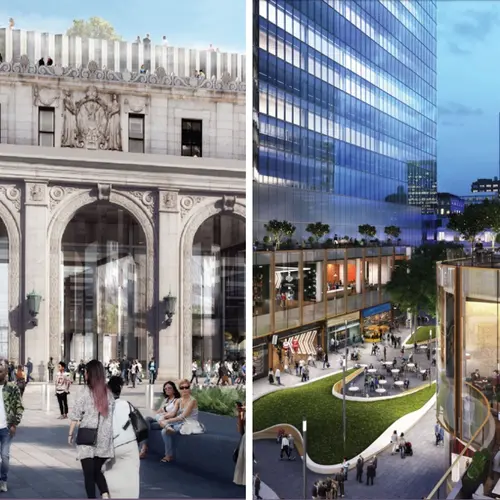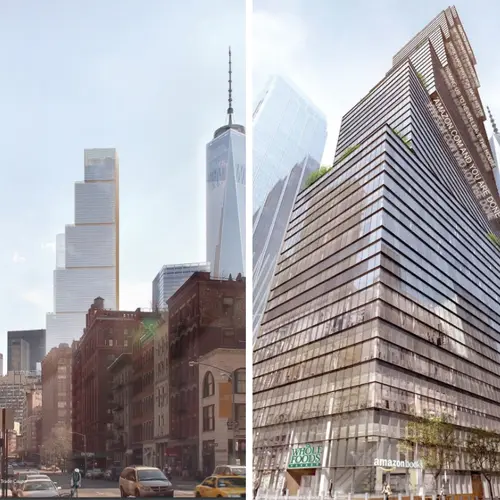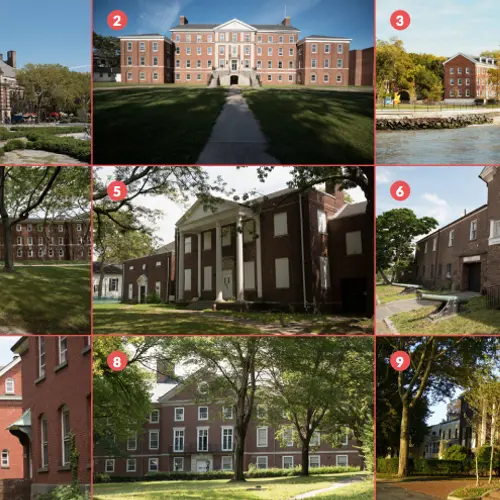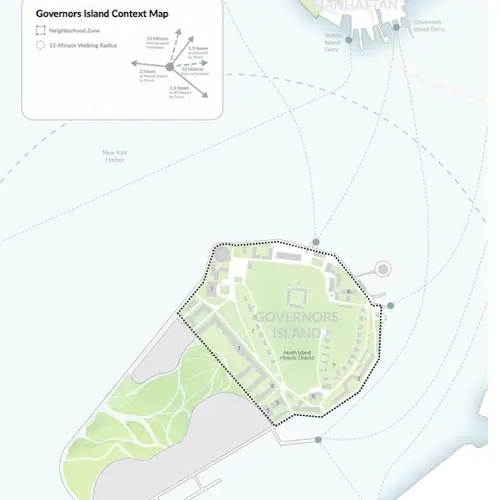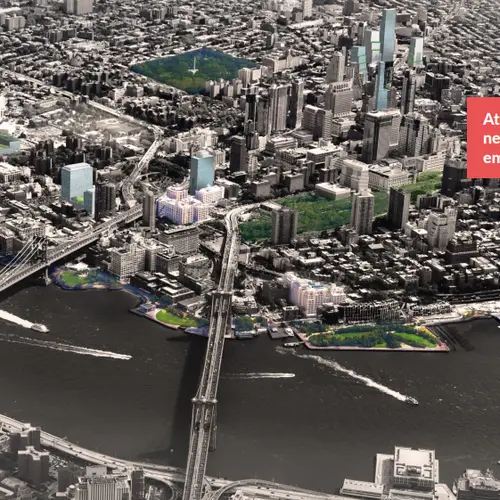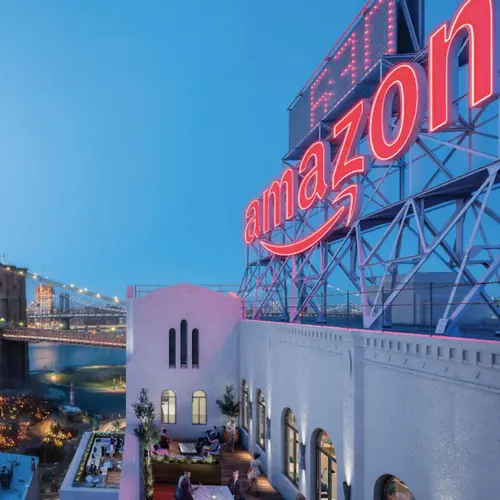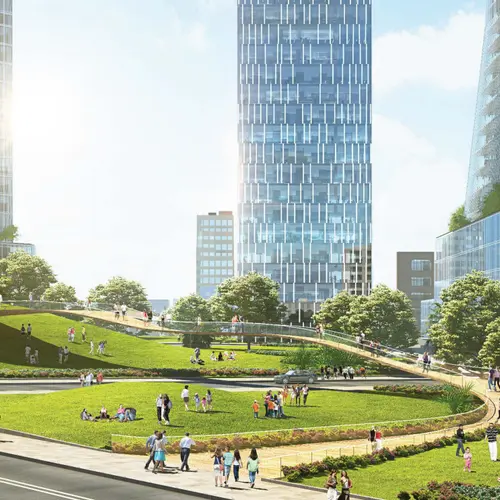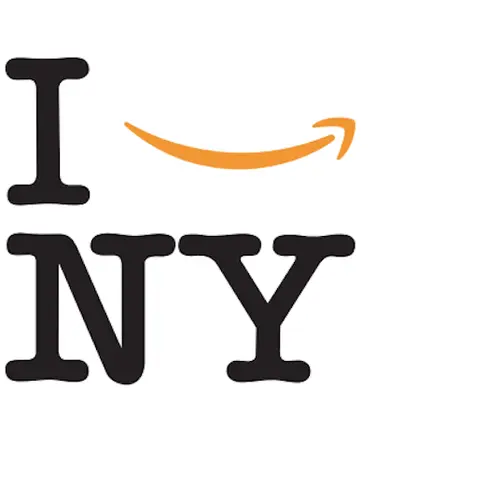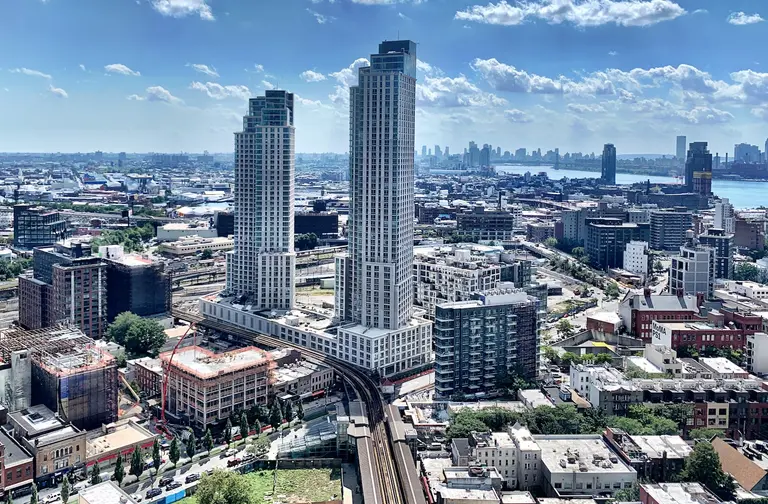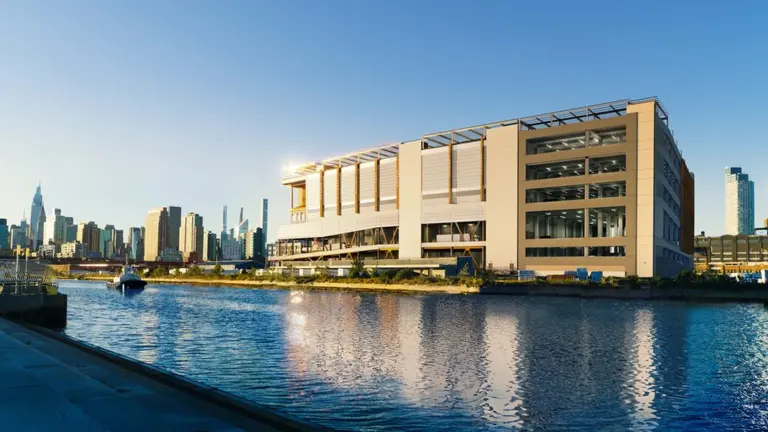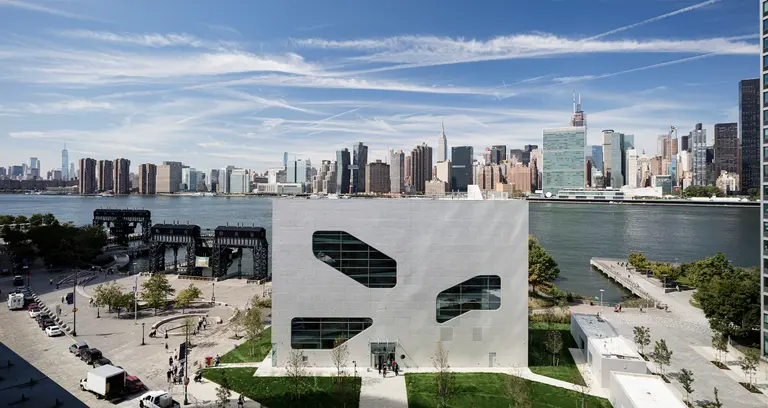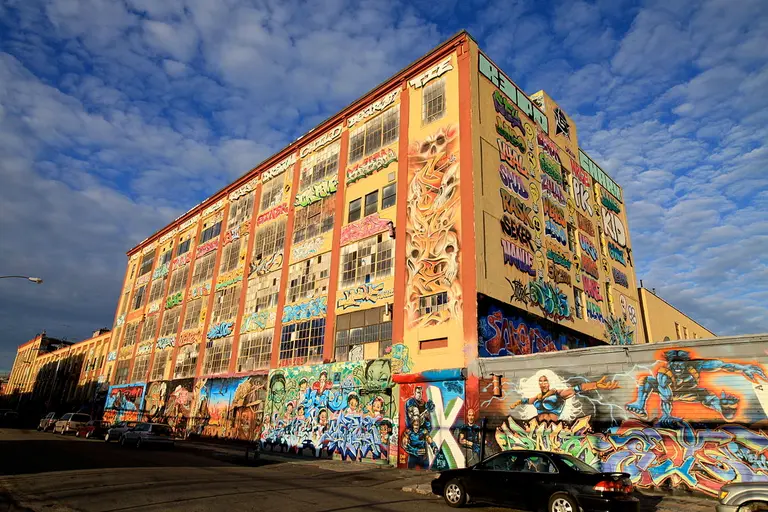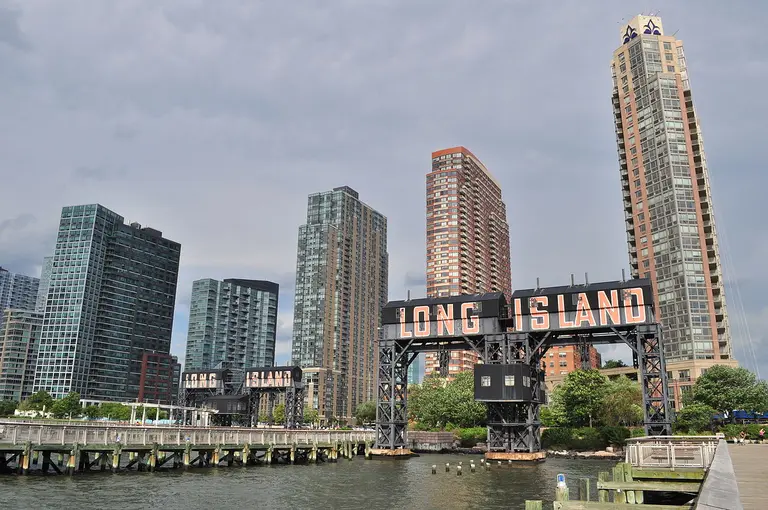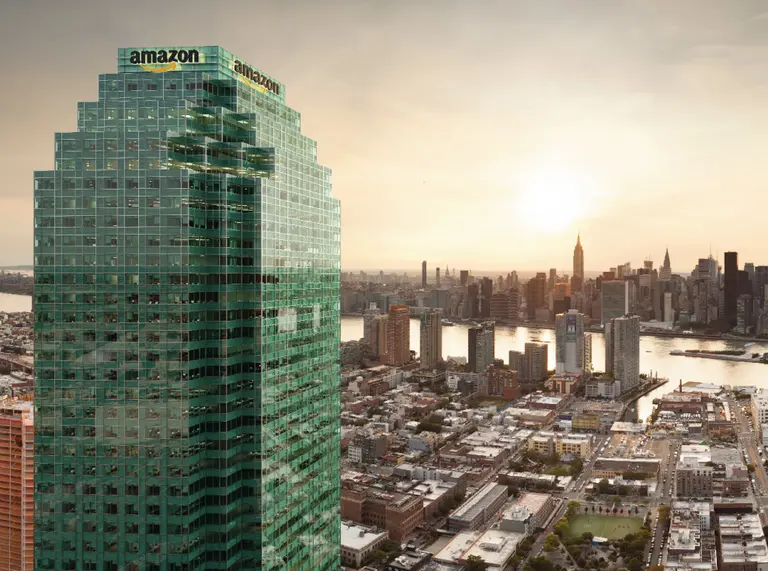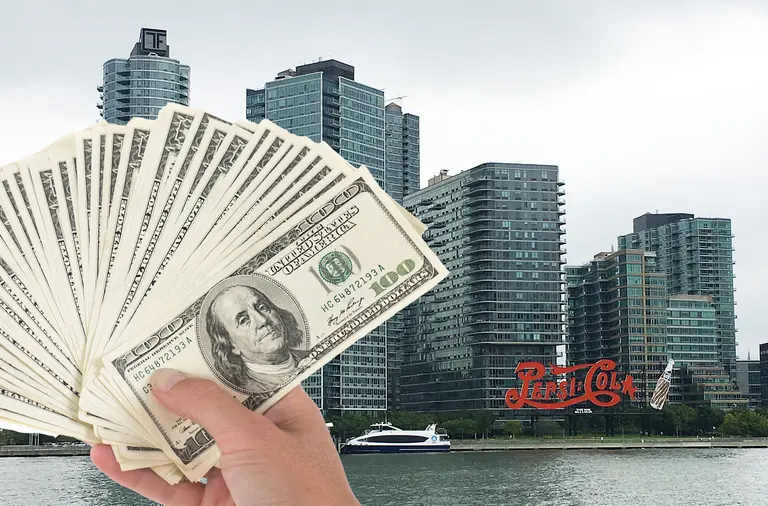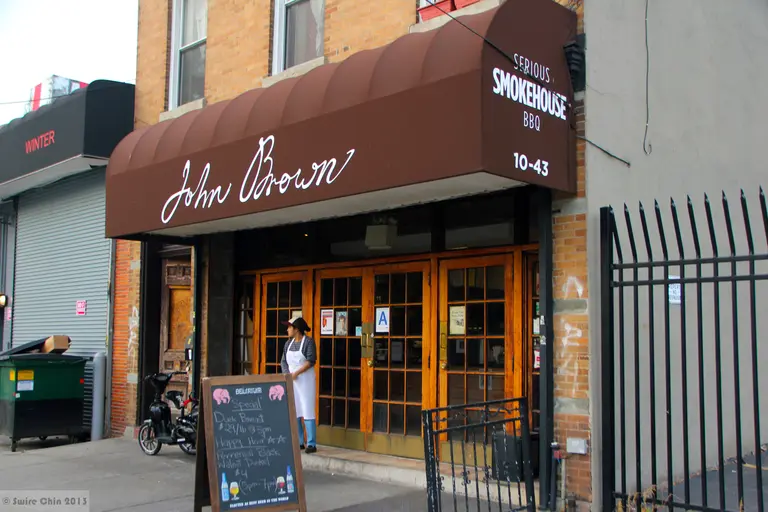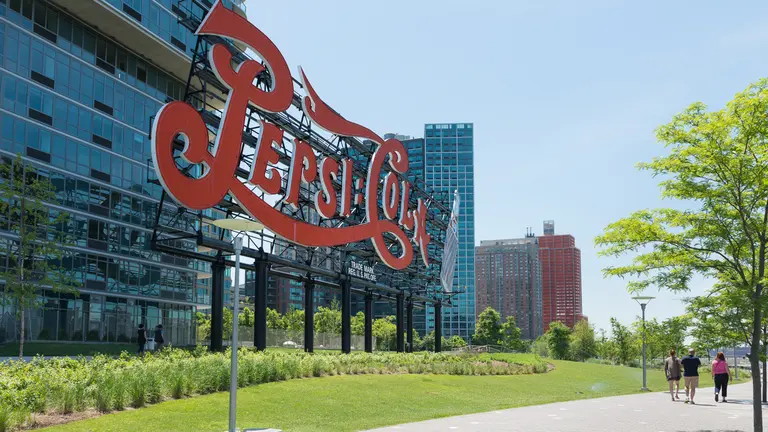How New York won Amazon: See the official proposals for each NYC neighborhood
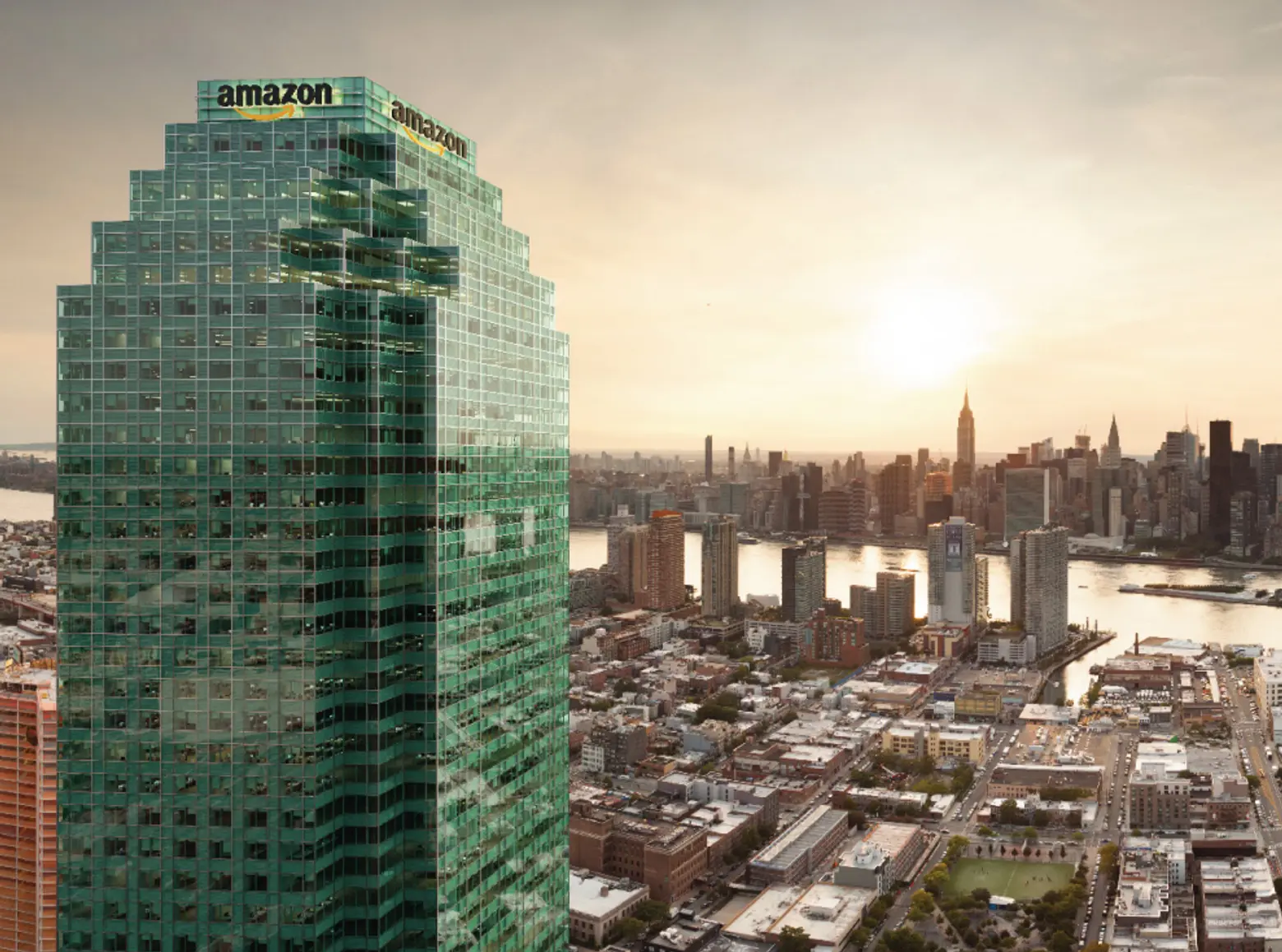
A rendering of One Court Square, where Amazon will temporarily move in 2019; via NYCEDC
City and state officials lured Amazon to open its new office complex in New York with an extensive pitch, complete with four suggested neighborhoods and the promise of prime real estate, according to documents released by the city’s economic development corporation on Monday. In exchange for 25,000 new jobs, Gov. Andrew Cuomo and Mayor Bill de Blasio are offering Amazon nearly $3 billion in incentives and grants. And while last month Amazon selected the Queens neighborhood of Long Island City as its new home, officials had proposed bringing Amazon’s campus to the Farley Building, 3 World Trade Center, Brooklyn Height’s Watchtower building, Bjarke Ingels’ The Spiral, and even Governors Island.
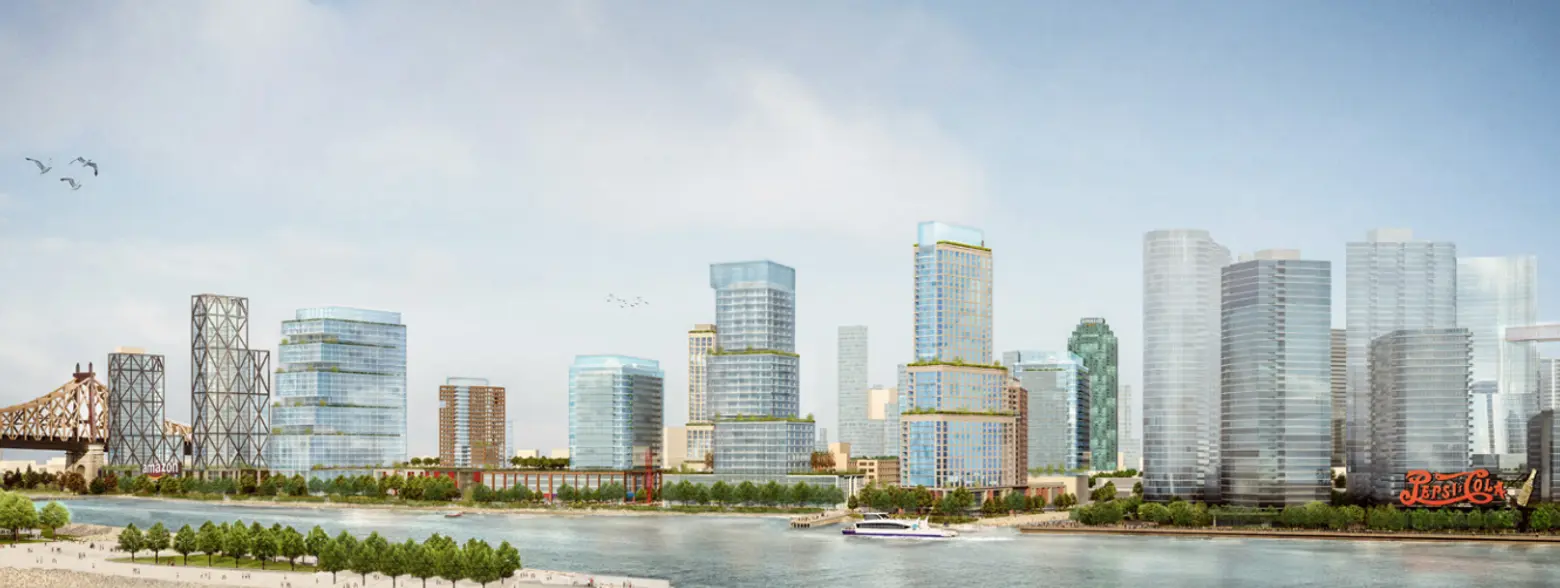

Long Island City
Chosen over 236 cities for Amazon’s headquarters, Long Island City was pitched by city and state officials as “a creative, mixed-use neighborhood with a rich legacy as the city’s industrial innovation center.” The bid boasted the culture, waterfront recreation, housing, and multiple transit options of the Queens neighborhood.
Beginning in 2019, Amazon will move into One Court Square, which will offer the company up to 1.5 million square feet of space. The proposal said that the 680-foot tower “presents one of the city’s most visible and valuable signage and naming opportunities.”
When it expands, the company can spread out across two districts in an area known as Anable Basin, one at its commercial core and one along the waterfront. Officials boast the ferry access at the second zone, which would help connect to the Cornell Tech campus on Roosevelt Island. Amazon will donate a new 600-seat school and 3.5 acres of public waterfront open space that will connect to the existing Gantry Plaza State Park. As the Wall Street Journal reported, Long Island City was also the cheapest of the four NYC neighborhoods suggested, with rents ranging from $24- to $49-per-square-foot.
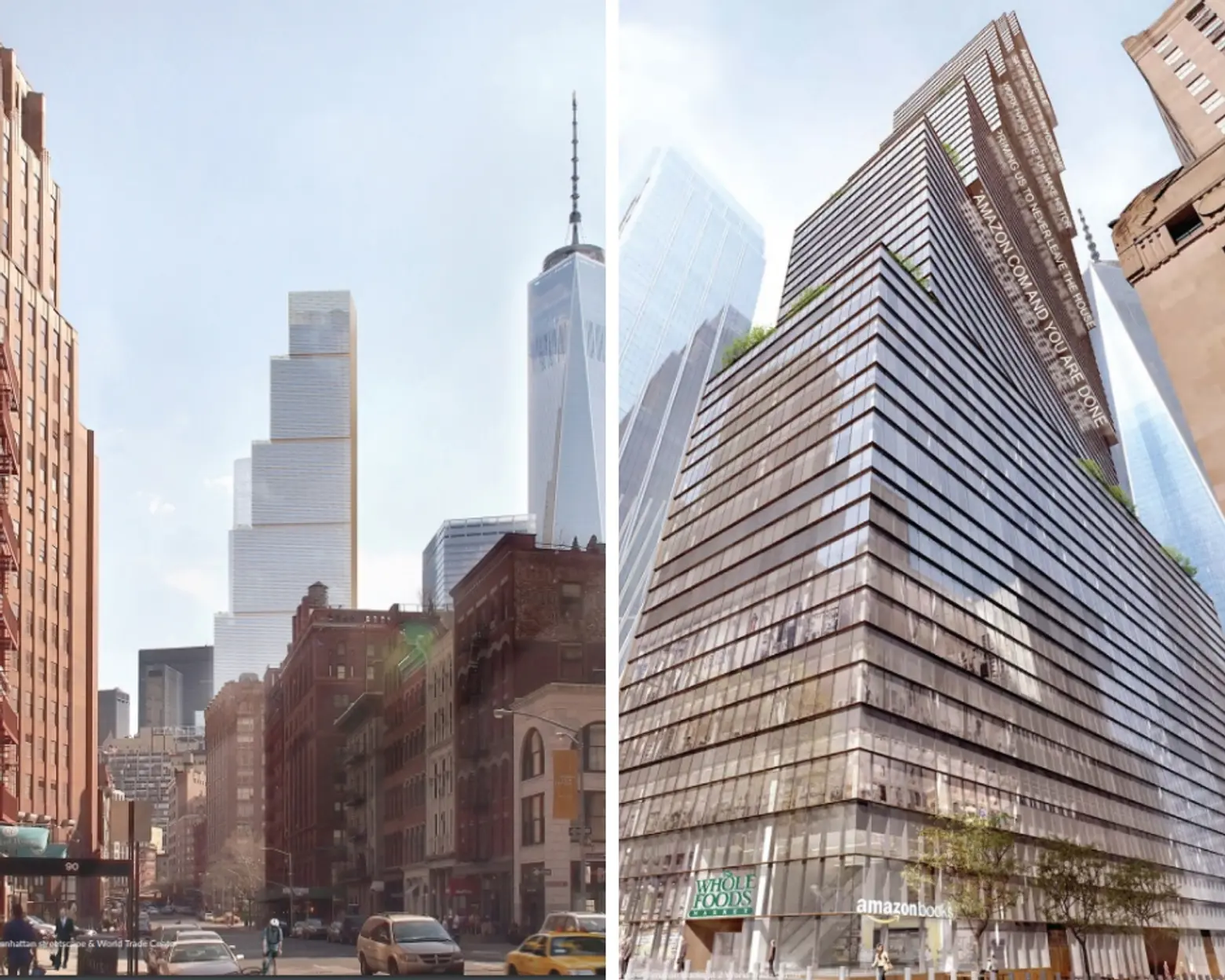
Rendering of Two World Trade Center designed by Bjarke Ingels
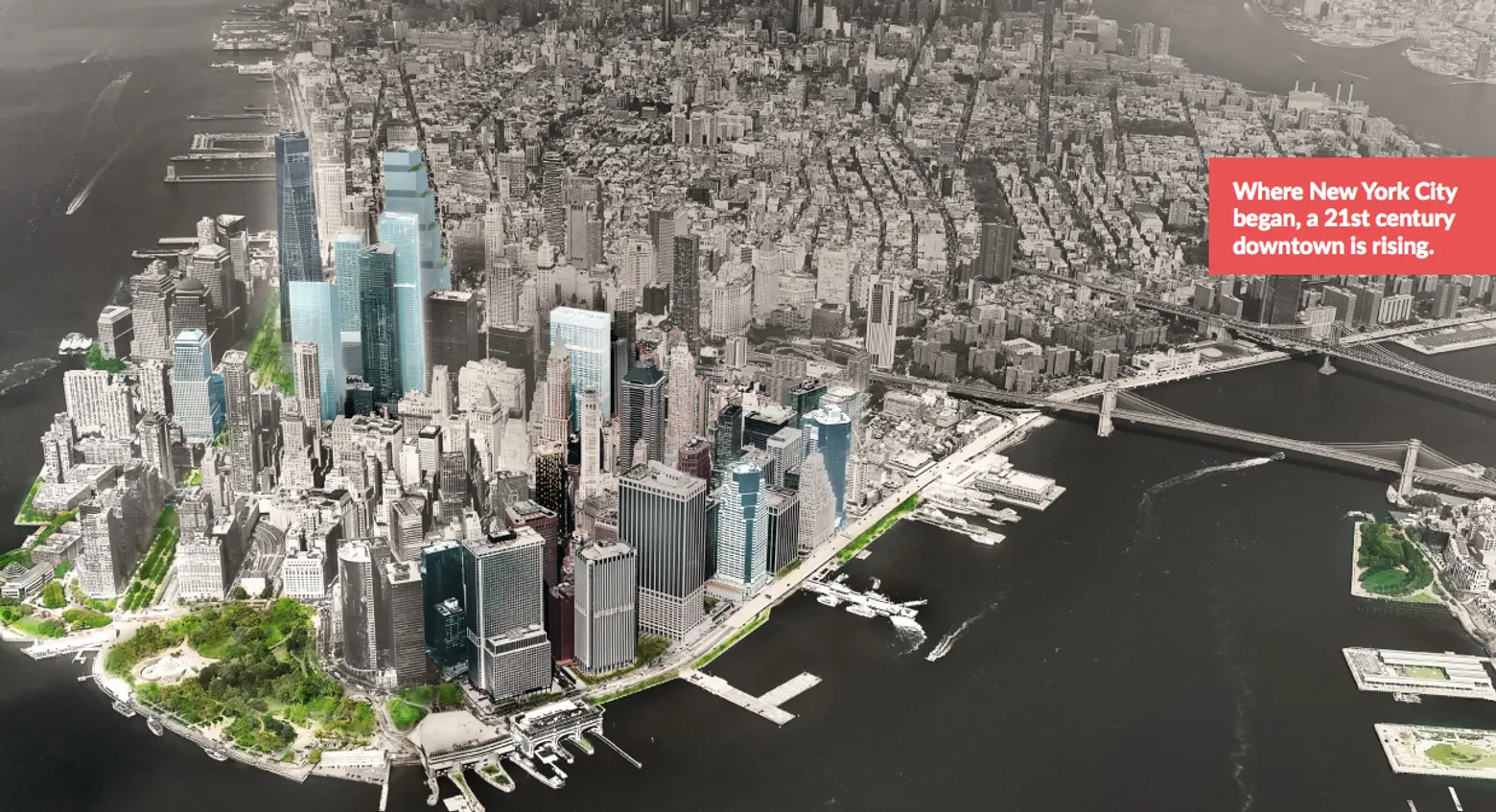
Lower Manhattan
In their bid to Amazon, officials presented Lower Manhattan as a “true ‘plug-and-play'” neighborhood. It said the company’s headquarters could take over multiple buildings at the World Trade Center, or surrounding office spaces.
During phase one, Amazon could move into Three World Trade Center, which has an available 1,420,00 square feet. According to the pitch, Amazon would have panoramic views and access to two roof terraces and a below-ground parking lot. Another option for phase one includes FiDi’s 28 Liberty Street, which also includes private outdoor space and on-site parking.
Officials pitched the World Trade Center and the Water Street corridor as two zones of potential expansion. Two World Trade Center offers nearly 2,500,00 square feet with green space and Five World Trade Center has the potential to offer another one million in gross square feet. Towers like 32 Old Slip, 180 Maiden Lane, and 199 Water Street are listed in the pitch for having the “latest in telecommunication technology and resiliency measures.”
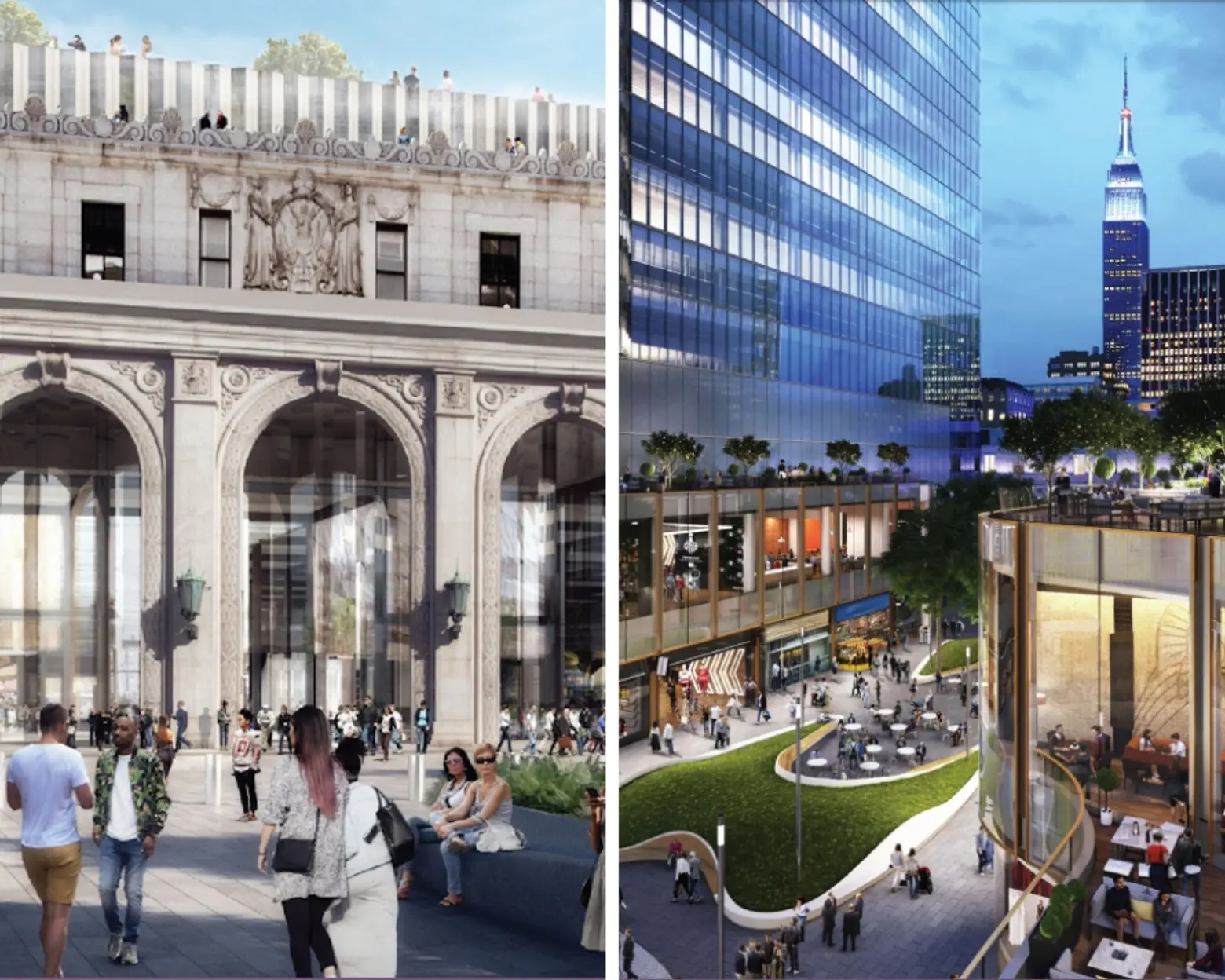
The Farley Building (left) and a Midtown West streetscape
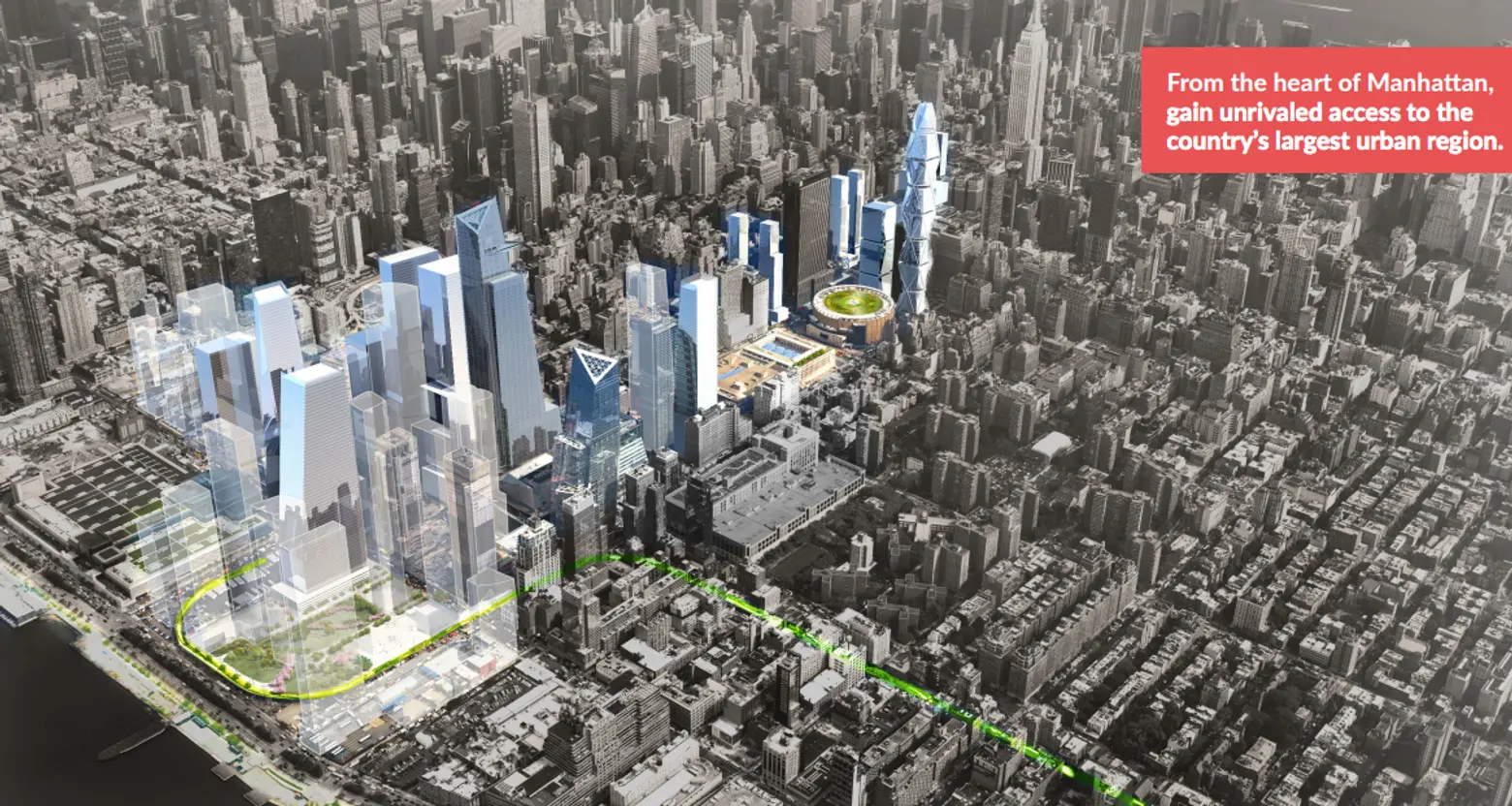
Midtown West
Officials proposed bringing Amazon to the Farley Building, the post office that is being converted into a railroad station. It’s unclear whether the plan to transform the historic spot into a transportation hub would have been put on hold for Amazon’s arrival, the sole tenant at the building, according to the bid.
During phase two, the proposal suggests Amazon move to Two Penn Plaza, the Vornado-owned building that sits across from Madison Square Garden and one block from the Farley Building. Officials wrote that Amazon could re-imagine the Midtown West area by expanding to two zones, by Penn Plaza and by Manhattan West and Hudson Yards, including 3 Hudson Boulevard and The Spiral, designed by Bjarke Ingels.

Rendering of the Watchtower building at 25-30 Columbia Heights
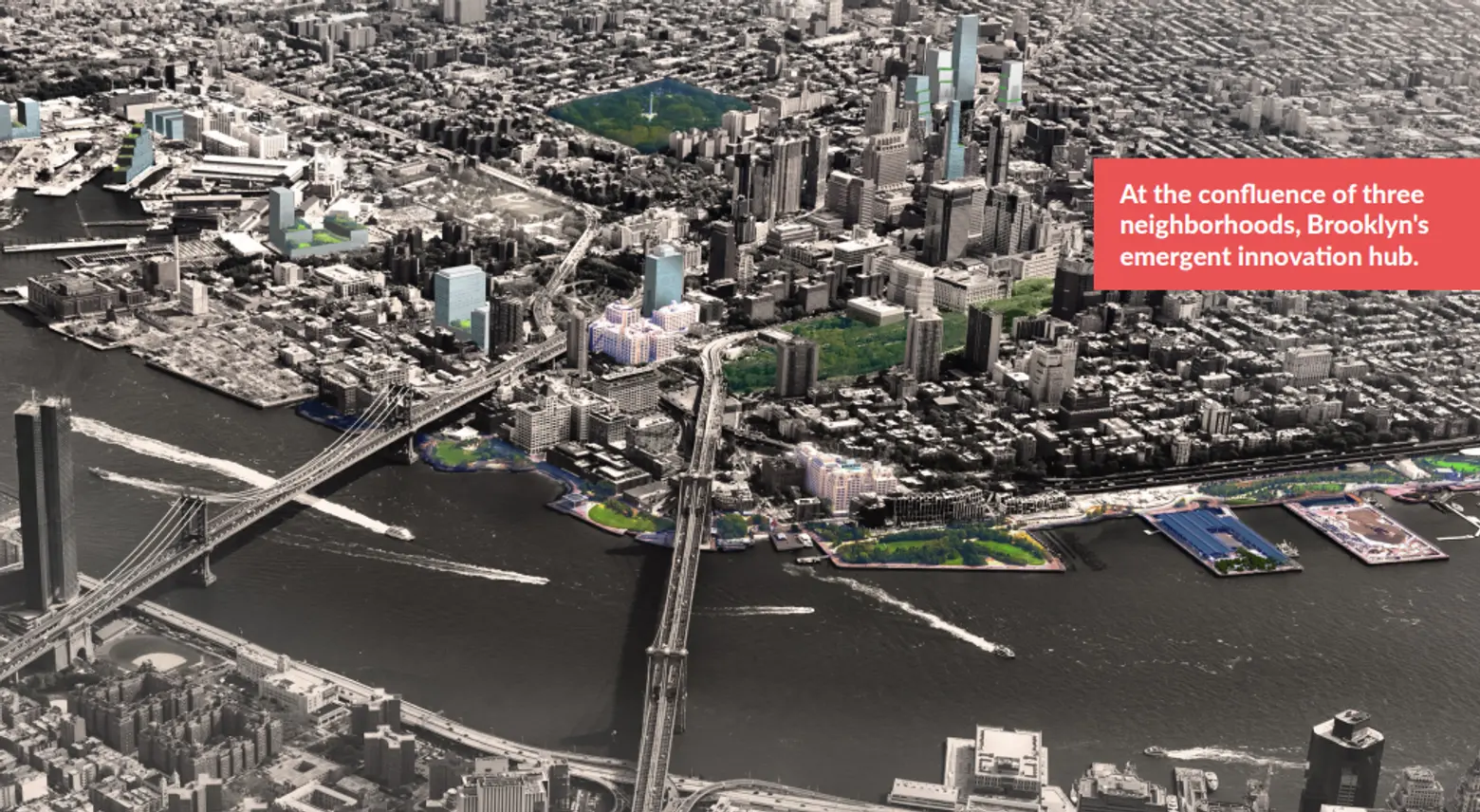
Brooklyn Tech Triangle
The Brooklyn Tech Triangle (DUMBO, the Brooklyn Navy Yard, and Downtown Brooklyn) was recommended for Amazon’s new home because of it being an “emergent innovative hub.” Phase one for Amazon’s move would be temporarily at Dock 72, the new manufacturing hub opening next year at the Brooklyn Navy Yard.
Another option for phase one was 25-30 Columbia Heights, the former Jehovah’s Witnesses Watchtower Building, which officials boast as having “prominent signage opportunity atop a Brooklyn icon.” The tech giant could then expand to three key interconnected hubs, the Navy Yard, DUMBO, and Downtown Brooklyn.
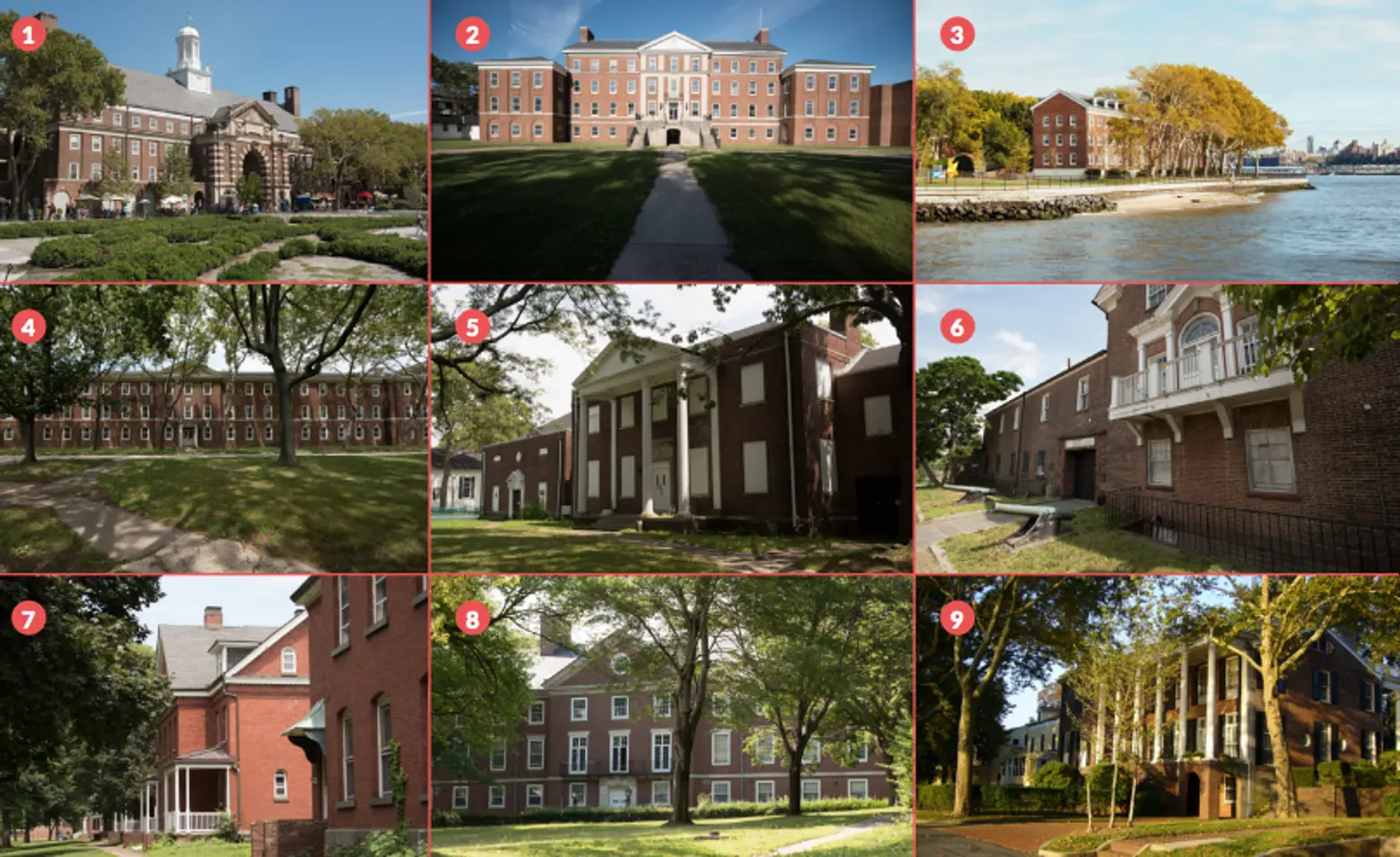
Governors Island
Officials said Amazon could turn Governors Island into an “island retreat” for the company to expand beyond its HQ2. The proposal says the Island’s 52 historic buildings would be the perfect spot for Amazon workers to test and create new ideas, as well as host events and workshops for the company. They boast its reachable location via a short ferry ride from all of the city’s proposed HQ2 locations.
See the full pitch to Amazon from the city and state here.
The documents come just days before a series of New York City Council hearings that will review the HQ2 deal. The first hearing will take place on Wednesday, Dec. 12, where council members will grill city leaders and Amazon executives about the plan, which was agreed upon behind closed doors and by using nondisclosure agreements.
On Tuesday, Cuomo and de Blasio announced the formation of a Community Advisory Committee (CAC) to guide Amazon’s move to Long Island City. According to the officials, the CAC will be made up of 45 community members who will meet quarterly starting next month, with three subcommittees meeting monthly. The groups will work to develop plans for the onsite public amenities promised, including job programs and infrastructure investment.
“Amazon’s new headquarters will bring more than 25,000 jobs benefitting all New Yorkers from NYCHA residents to CUNY students,” de Blasio said in a statement.
“The Community Advisory Committee will bring together stakeholders of all backgrounds to help shape this important plan. Robust community engagement is critical to ensuring that the investments and resources generated from this project serve the needs of everyone in Long Island City and beyond.”
RELATED:
